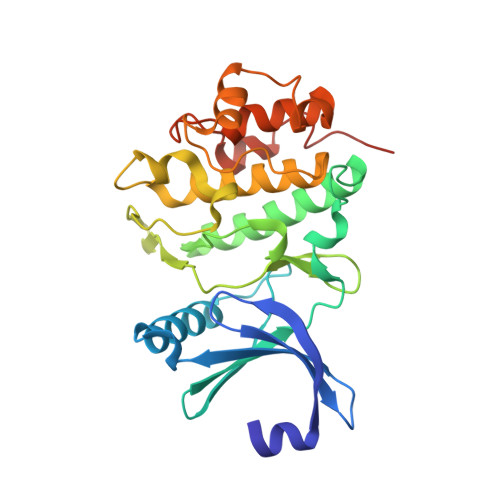Synthesis and Evaluation of Triazolones as Checkpoint Kinase 1 Inhibitors.
Oza, V., Ashwell, S., Brassil, P., Breed, J., Ezhuthachan, J., Deng, C., Grondine, M., Horn, C., Liu, D., Lyne, P., Newcombe, N., Pass, M., Read, J., Su, M., Toader, D., Yu, D., Yu, Y., Zabludoff, S.(2012) Bioorg Med Chem Lett 22: 2330
- PubMed: 22342147
- DOI: https://doi.org/10.1016/j.bmcl.2012.01.043
- Primary Citation of Related Structures:
2YER, 2YEX - PubMed Abstract:
Checkpoint kinase 1 (Chk1, CHEK1) is a Ser/Thr protein kinase that plays a key role in mediating the cellular response to DNA-damage. Synthesis and evaluation of a previously described class of Chk1 inhibitors, triazoloquinolones/triazolones (TZs) is further described herein. Our investigation of structure-activity relationships led to the identification of potent inhibitors 14c, 14h and 16e. Key challenges included modulation of physicochemical properties and pharmacokinetic (PK) parameters to enable compound testing in a Chk1 specific hollow fiber pharmacodynamic model. In this model, 16e was shown to abrogate topotecan-induced cell cycle arrest in a dose dependent manner. The demonstrated activity of TZs in this model in combination with a chemotherapeutic agent as well as radiotherapy validates this series of Chk1 inhibitors. X-ray crystal structures (PDB code: 2YEX and 2YER) for an initial lead and an optimized analog are also presented.
Organizational Affiliation:
AstraZeneca R&D Boston, 35 Gatehouse Drive, Waltham, MA 02451, USA. Vibha.Oza@astrazeneca.com

















